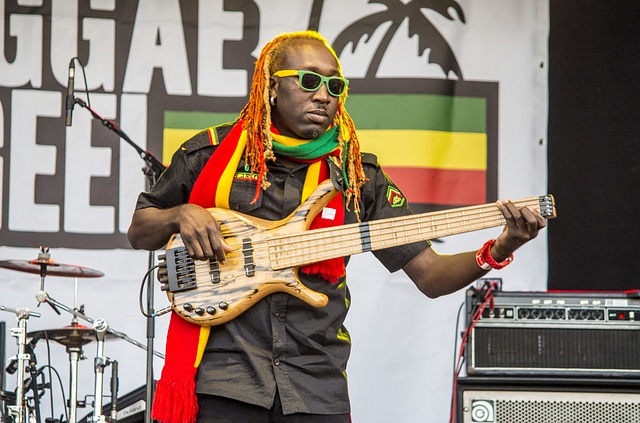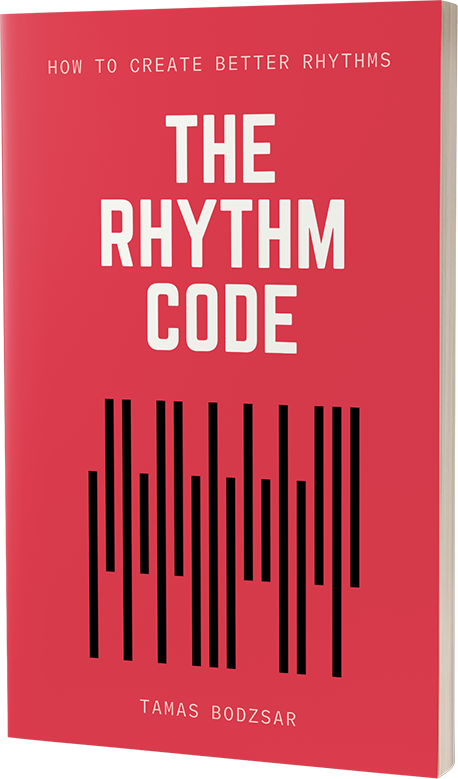
It’s important to know that the chord progression is not the best way to identify a music style. Or in other words: you can use literally any kind of chord progression, no matter the genre or the style.
In fact, one of the best ways to make your music more unique is by using totally different chord progressions than other artists in your genre!
However, if you are a beginner songwriter, it’s still good to learn what are the most commonly used chord progressions in successful reggae songs, so you can use them as a starting point.
Most reggae chord progressions are using only diatonic chords. Diatonic chords are chords within the key. So in the case of the key of C major, these are all the diatonic chords:
C, Dm, Em, F, G, Am, Bdim
The chord Bdim is the only exception, you won’t find that chord in any reggae song. So the other 6 diatonic chords are the ones that are used in most of the songs. Using diatonic chords is OK for starting, but again, if you don’t want your song to sound like all other songs in your genre, you will need to spice up your chord progressions with more “exotic” chords.
I will transpose all the chord progression examples into the key of C major because it’s easier to understand them if they are in the same system. But you can use them in any key you want.
Two Chords
You can write a reggae song using only two chords. In fact, this is one of the most common chord progressions in reggae songs. Bob Marley used it, Garnet Silk used it, Sanchez used it, Alton Ellis used it, Gregory Isaacs used it in his song called “Night Nurse”:
The chord progression is a VIm and a V chord, which are Am and G in the key of C major.
I saw a video on Youtube where they confused this chord progression, and they thought that the song is in the key of G major. Although there is no tonic C chord in the song, it is still in the key of C major.
How do we know that?
We know that because the MELODY notes are using the notes of the C major scale. (Actually, the song is in “A” Aeolian mode, but it’s the same thing.)
This is important because the tonal center is the Am chord! So this chord progression is built up from a tonic (Am) and a dominant (G) functions. The tonic is the “home” and the dominant is the “away” from home. (You can learn more about these from our songwriting course.)
Three Chords
Using two chords in a song can be limiting and it can become boring too. So let’s see an example for a reggae chord progression with three chords.
The song “Is This Love” by Bob Marley contains only three chords, the VIm, the IV, and the I. Here is the actual chord progression in the key of C major:
Am – Am – F – C
VIm – VIm – IV – I
Notice that all the previous and the upcoming chord progressions contain both major and minor chords! If you are only using minor chords, it will sound too “dark” or sad. If you are using only major chords, it will sound too simple or boring.
Four Chords
While there are many songs that contain only two or three chords, the majority of reggae songs contain four chords.
There are literally hundreds (if not thousands) of songs that are using the very same four chords. These chords are the three main functions (subdominant – dominant – tonic) IV – V – I and one minor chord, which is the VIm most of the time.
However, I have to tell you that you need to be careful with these four chords because it became so overused that it’s hard to use them in a context that is not corny or cliché.
One example is the song “I’m Yours” by Jason Mraz. Here is the chord progression of this song in the key of C major:
C – G – Am – F
I – V – VIm – IV
The chord progression of “No Woman No Cry” by Bob Marley is almost exactly the same:
C – G – Am – F – C – G – C – G
I – V – VIm – IV – I – V – I – V
As I said, this chord progression contains the three main functions (subdominant – dominant – tonic), and one minor chord, which is the VIm most of the time. But you can use other diatonic minor chords instead of the VIm. Here are some examples.
The song “Red Red Wine” by UB40 contains the chord IIm, which is Dm in the key of C major:
C – F – Dm – G
I – IV – IIm – V
Another example is the song “Cottage In Negril” by Tyrone Taylor. This song also contains the IIm chord. The period of this chord progression is longer than the previous examples, but this one also contains only four chords.
C – G – F – F – Dm – G – C – G
I – V – IV – IV – IIm – V – I – V
The next example is the song “Don’t Make Me Wait” by Sting and Shaggy. This chord progression contains more than one minor chord, and notice how it changes the mood of the song! Because it has two major chords and two minor chords, the mood of the song is a little bit “less happy”.
C – Em – Am – F
I – IIIm – VIm – IV
Did you notice that this chord progression is almost exactly the same as the C – G – Am – F? The only difference is that it contains the Em chord instead of the G.
This is because Em is a substitute chord. Both the G and the Em chords are dominant functions, so it looks like they wanted to avoid an overused chord progression.
Borrowed Chords
Using diatonic chords is fine. But it can be boring after a while. You can spice up your chord progressions by using borrowed chords. Borrowed chords are chords that we “borrow” from another key.
For example, the song “Billionaire” by Bruno Mars is using chord III7, which is a dominant seventh chord. Here is the chord progression in the key of C major:
C – E7 – Am – V
I – III7 – VIm – V
Conclusion
– You can start making reggae chord progressions by using diatonic chords, however, you can spice up your music with some borrowed chords.
– The VIIdim chord doesn’t sound very good in popular genres, so it’s better to use the other 6 diatonic chords when we write a song.
– You can create a song by using only two or three chords, but the majority of the songs are using four chords.
– The chord progressions are using both major and minor chords, regardless of how many chords are in the song.
– Notice that most chord progressions start with the I. chord and end with the IV. or the V. chord!
The secret pattern behind successful songs
Get the eBook for $7

